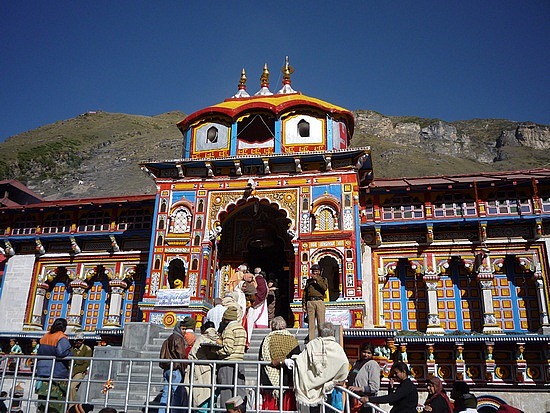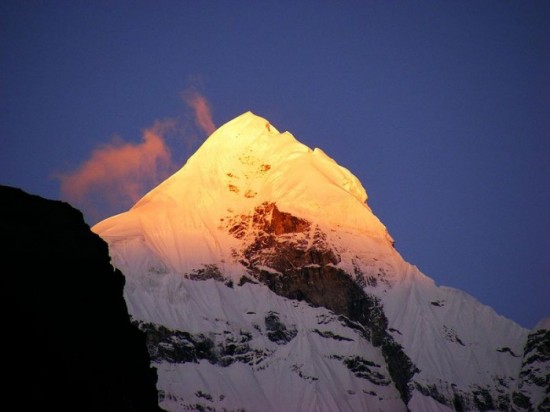Badrinath Temple, or Badarinath Dham, is one of our most popular divyadesam and is part of the Char Dham Yatra. In 2012, the date of opening of the Kapat of Shri Badrinath Temple is April 24. The closing date is after Diwali (November 13, 2012). Badrinath shrine is located in the Himalayan heights in the Garhwal Hill tracks in Uttarakhand in India at an altitude of 10,248 feet.
- SrI Badrinath Temple
At Badrinath, Sri Hari Vishnu is worshipped as Badari Narayan and Badari Vishal. The archa-vigraha of Badarinarayan is seen under the Badari tree and is flanked by Kuber (God of wealth) and Garuda, Narad, Naranarayana. There are also shrines dedicated to Maha Lakshmi.
Badrinarayan temple, is situated along the Alaknanda river, in the hill town of Badrinath in Uttarakhand state in India. The temple and town are one of the four Char Dham and Chota Char Dham pilgrimage sites. It is also one of the 108 Divya Desams, holy shrines for SrI Vaishnavites. The temple is open only six months every year (between the end of April and the beginning of November), due to extreme weather conditions in the Himalayan region.
Several murtis are worshipped in the temple. The most important is a one meter tall statue of SrI Vishnu as Lord Badrinarayan, Saligram murti. The statue is considered by many Hindus to be one of eight swayam vyakta kshetras, or self-manifested statues of SrI Vishnu. The murti depicts SrI Vishnu sitting in meditative posture, rather than His far more typical postures. In November each year, when the town of Badrinath is closed, the image is moved to nearby Jyotirmath.
The temple is approximately 50 ft (15 metres) tall with a small cupola on top, covered with a gold gilt roof. The facade is built of stone, with arched windows. A broad stairway leads up to a tall arched gateway, which is the main entrance. Just inside is the mandapa, a large pillared hall that leads to the garbha grha, or main shrine area. The walls and pillars of the mandapa are covered with intricate carvings.
Tapt Kund hot springs next to Badrinath Temple, enclosed inside bath house.
Badrinath Temple at Morning:

The main shrine area houses the black stone image of Lord Badrinarayan, sitting under a gold canopy, under a Badri Tree. There are fifteen more murtis around the temple that are also worshipped. These include murtis of Nara & Narayana, Narasimha (the fourth incarnation of Vishnu), Lakshmi, Narada, Uddhava, Kubera, Garuda. Hard sugar candy, Tulsi, and dry fruits are the typical prasad offered at Badrinath temple.
The Tapt Kund hot sulphur springs just below the temple are considered to be medicinal—many pilgrims consider it a requirement to bathe in the springs before visiting the temple. The springs have a year-round temperature of 45°C.

Badrinath shrine only remains open for six months in a year and remains closed during winter (October to April).









narayan bhagwan ki jai
when will be the entry of Badrinath temple will start